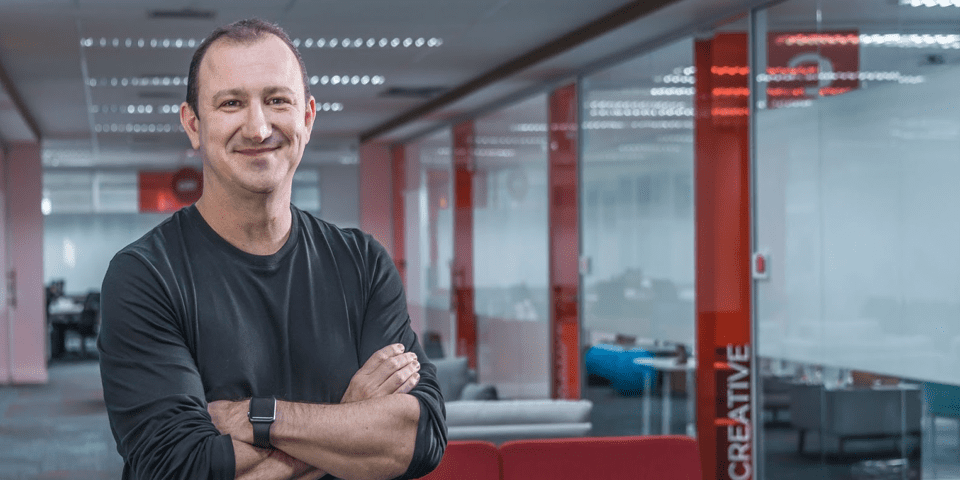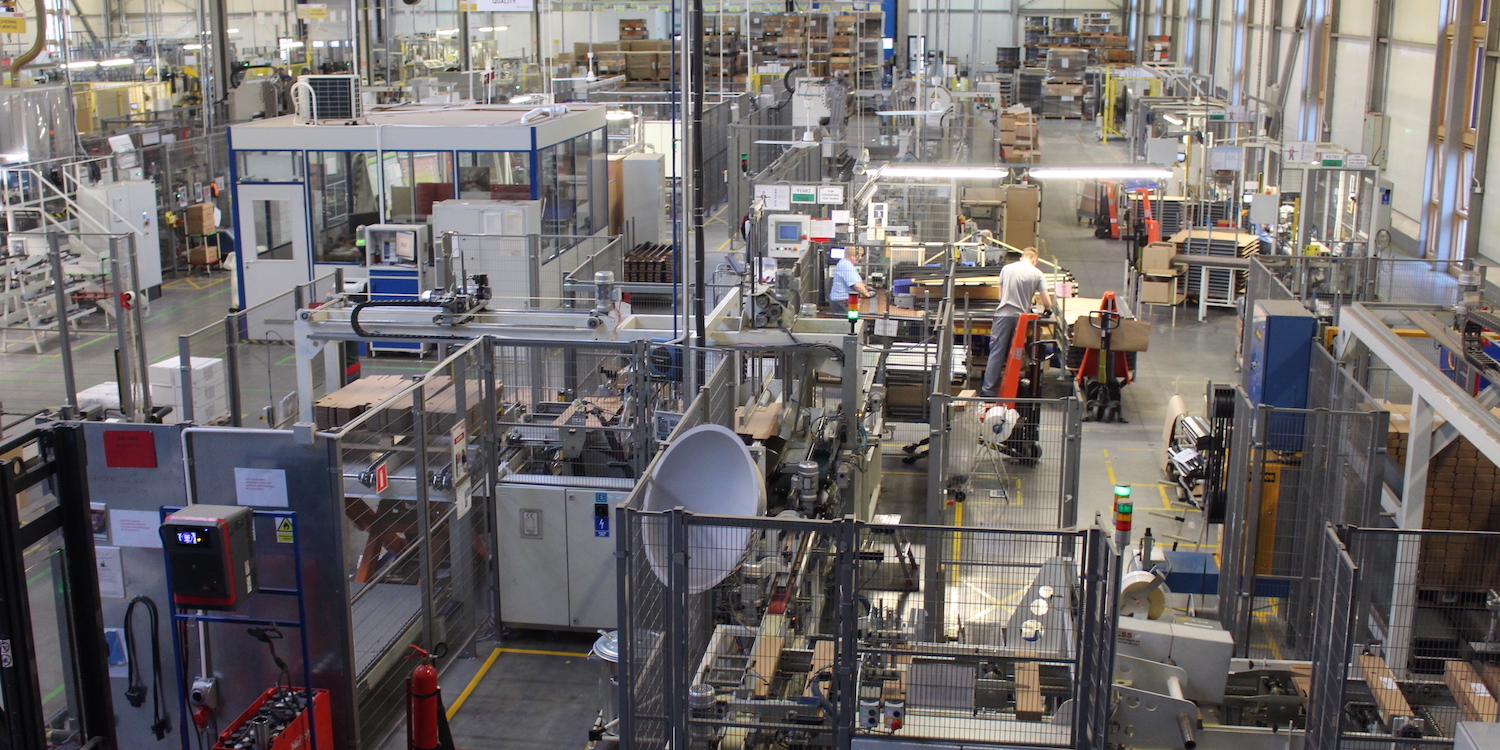
With digital, lean finally reaches CEOs
INTERVIEW – At last month’s Lean Digital Summit in Lisbon, César Gon told attendees how, with lean digital, we have an opportunity to finally get the attention of CEOs and business leaders.
Interviewee: César Gon, CEO, CI&T
Interviewer: Cécil Dijoux, Institut Lean France
César Gon co-founded digital services company CI&T in 1995. Today, the business has over 2,500 digital business strategists, designers, and engineers working across the USA, Brazil, UK, Australia, Japan, and China. César has led CI&T to some spectacular results with essentially one vision in mind: the translation of lean principles to digital. It has been incredible to witness the incredible growth of CI&T over the years. More on it here on Planet Lean.
I sat down with César at last month’s Lean Digital Summit.
Cécil Dijoux: How did it all start for you?
César Gon: I’m a computer engineer. When I finished my masters, I created my company. Initially, the goal was to finance my PhD. This was back in 1995, when the Internet was in its infancy. I believed that we were in a time of fantastic opportunity in the IT world, and wanted to create a stable, sustainable business in that field. It took off, I gave up my PhD to focus on CI&T full-time.
CD: How did you come to identify lean as a strategy for CI&T?
CG: In 2006, CI&T first set foot in the USA. At the time, we were a good old waterfall CMMI company, with processes and dedicated functions. We had 350 people working for us, and we were doing very well. However, Yahoo! (one of our first clients in the USA) pushed us in a different direction. During a visit to our offices for gemba walks, they fell in love with our energy and know-how, but they weren't thrilled about our CMMI-compliant process. I think they felt that it would slow them down considerably. So, they offered to take 20 of our people, train them and do an experiment with Agile. Six months later, we were impressed with the results: productivity, quality, team satisfaction and, more importantly, customer satisfaction had all gone up. We were familiar with Agile, but thought it wasn’t for us. We were surprised it had worked so well and start to ask ourselves why it had.
We don’t like to have unanswered questions at CI&T, so I went on to find out why Agile had worked better than our highly predictable processes. That led me to speak with Embraer, the airplane manufacturer, where I was told to look into lean thinking.
In 2007, we built the CI&T Production System, inspired by the Toyota Production System. As we moved more and more teams to the new way of working, we started to see results as good as the ones that had followed the Yahoo! experiment, across the board.
However, contradicting what the lean principles were teaching us, my leadership team and I were still pretty much following a traditional command-and-control approach. There was a disconnect between leadership and the Agile teams. One day, during an informal meeting with an Agile coach, I had a revelation when he told me: “If you remove the managers, we will be able to scale the offering. Managers ask the wrong questions and are looking at the wrong metrics.” That was when we started wondering how lean could become our management system.
A pivotal moment for me was when I met John Shook. We started to do some training with him and I loved it so much that I kept going back to it. In 2010, John asked me: “Why are you doing this training for the third time?” I said: “I still haven’t figured out how to use lean to solve my problems.” He then told me the most important thing anyone has ever told me: “César, you have to stop learning and start doing.” He then gave me some advice on hoshin kanri and said: “Maybe you should also start to do some A3 thinking.”
In 2010, Lean Institute Brasil began to support our lean transformation, and that was it. We were on our way to implement lean as the strategy for CI&T. Fast-forward to 2016, and we have dozens of CEOs visiting our campus to learn more about our way of dealing with the challenges thrown at us by the digital world.
CD: How can you tell these CEO understand what lean is about?
CG: They typically come to us to understand how we managed to scale Agile. Most companies have tried to do this to some extent and failed, so they are not new to Agile and lean. However, they are normally struck by the shift in leadership mindset that we have experienced. They also want to see how we work with visual management, our approach to problem solving, and our discipline in thinking deeply about issues before jumping to solutions.
With a number of CEOs willing to experiment, we ran a joint hoshin sessions. They were astonished by the level of engagement of their executive teams. In just two weeks, we achieved what would've taken them six months. We have infused hoshin with design techniques, which remove a lot of the burden of traditional strategic planning and boosts collaboration across hierarchies.
For me, it was particularly rewarding to hear that for a number of those CEOs coming to see us was a turning point.
CD: How did lean digital become a CI&T service?
CG: We are value oriented – it's just part of our culture. And over time it became clear to us that we could help other companies to leverage digital opportunities as a new service. Our first engagement of this kind saw 300 people from CI&T support a big bank to change the way they manage initiatives, deliver 10 times faster, and develop leaders. The idea resonated so well with the business community that we are now engaging directly with CEOs. In the last two years alone, we have had 86 CEOs coming to us to ask for help with digital.
CD: How do managers from the companies you help react when they see so many people from another business coming in to implement change?
CG: They can feel threatened. We propose radical changes to the organization, with squads and value streams, to help multi-disciplinary teams focus on the value they deliver to customers. We try to minimize this negative feeling by starting small, with one or two value streams. Once everyone acknowledges results and feels safe, we expand and introduce more changes.
CD: In your talk at the Lean Digital Summit, you mentioned how lean digital companies should look at Amazon, rather than Toyota. I found this to be an interesting point of view, first of all because Toyota’s original problem to solve was lack of cash wherever Amazon is an incredibly cash-rich organization. Secondly, because Amazon’s CTO Werner Vogels himself recommends in this article to look into Toyota’s kaizen approach to build software factories. How come do you recommend we look at Amazon when Amazon’s CTO himself recommends looking at Toyota?
CG: Well, that's exactly my point. If you really want to help a big corporation transition to the digital era, it’s better to pay more attention to Jeff Bezos, Amazon's founder and CEO, than to his CTO. You are right, Amazon now has a lot of cash, but if you look back and compare the journeys of the four big digital powerhouses (Amazon, Facebook, Google and Apple) you are probably going to conclude that Amazon had, by far, the most implausible journey of them all. They succeeded against all odds, and that’s because Bezos is a fantastic lean digital leader. The CTO of Amazon mentions kaizen because he knows the power of the lean tools. I don't see a contradiction, as all lean tools are directly applicable to software development. My point is that the inner workings of digital natives like Amazon offer us a unique opportunity to understand the ingredients that the Toyota Production System is missing. Traditional companies will need to act more like Amazon, if they want to succeed. Our translation of TPS into the digital domain is a possible way forward.
CD: CI&T has been on a lean journey for 12 years now. Why do you think that lean thinking is so important to a digital transformation?
CG: Thanks to its practice, lean is a very powerful framework for transforming cultures, and a digital transformation is ultimately a cultural issue. It’s a game changer.
THE INTERVIEWEE

Read more


COLUMN - In the first of a series of columns written by CEOs, John Bouthillon of PO Construction explains how lean has kept his company afloat through the recession.


VIDEO INTERVIEW - Planet Lean speaks with Jeff Sutherland, one of the inventors of scrum software development, about the evolution of this Agile framework and its relationship with lean.


FEATURE – Successfully engaging people and building a solid daily management system is allowing a Velux factory in Poland to fulfill its strategic goals.


INTERVIEW – An American group of restaurants is experimenting with the application of lean thinking in its kitchens and dining areas. Planet Lean had a word with the chefs to see what’s cooking.

